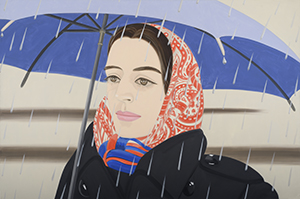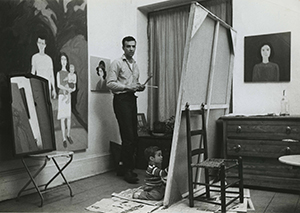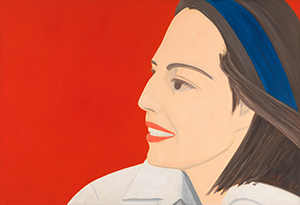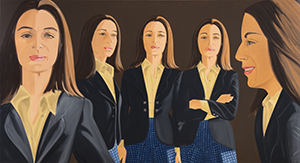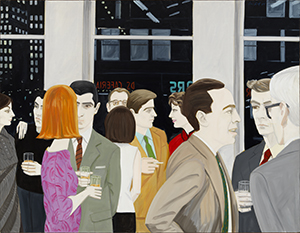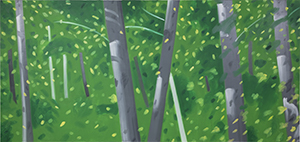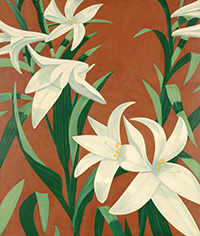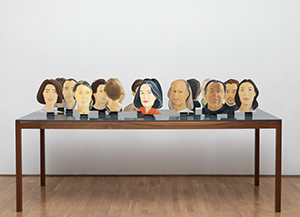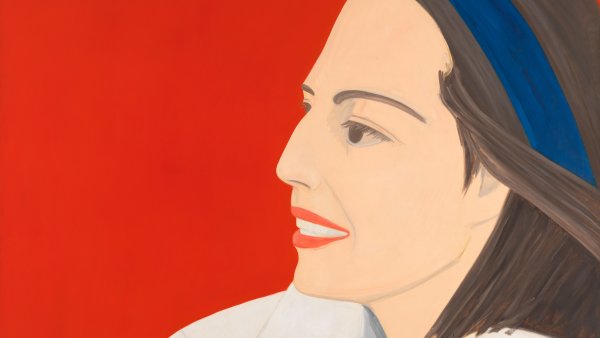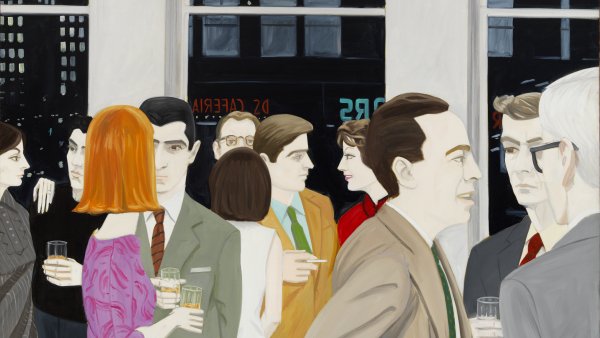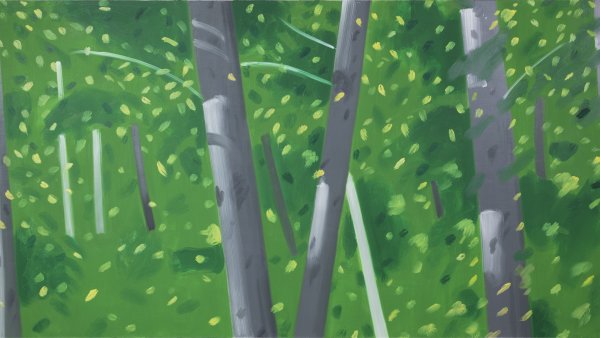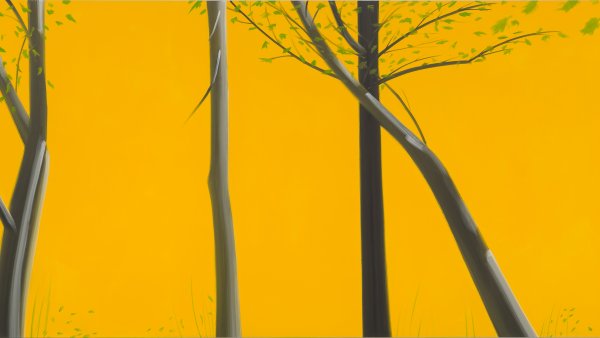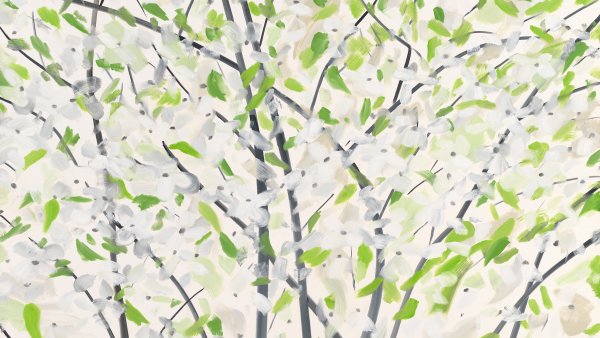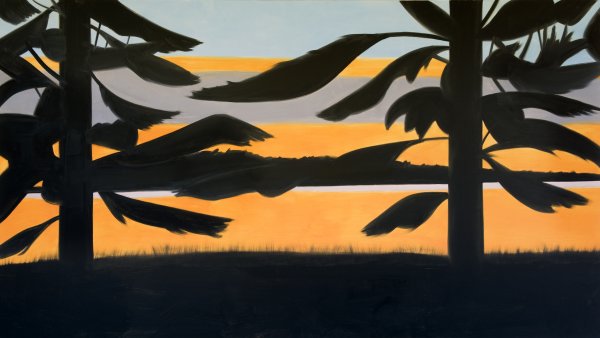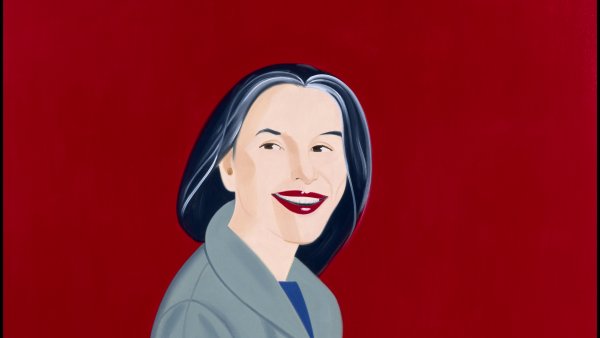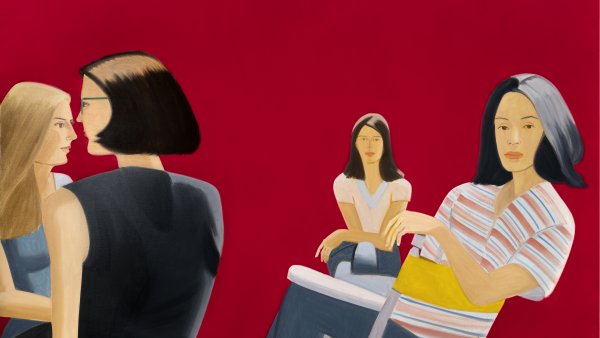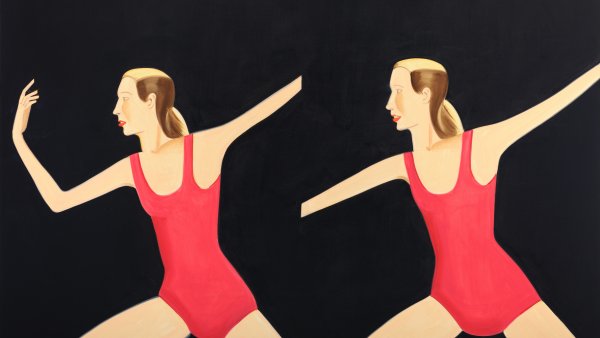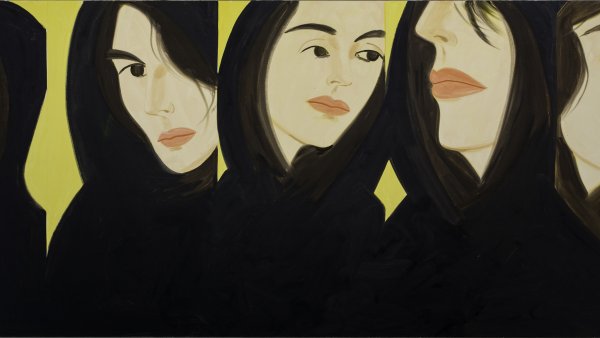For the first time in Spain the Museo Nacional Thyssen-Bornemisza is presenting a retrospective on the American painter Alex Katz (born New York, 1927), one of the most important figures in 20th-century American art who remains active today, aged ninety-four. The exhibition is curated by the museum’s artistic director Guillermo Solana and has benefited from the participation of the artist himself, who has closely followed the project’s development. Brought together for this event are 35 large-format oil paintings accompanied by various studies, allowing for a complete survey of Alex Katz’s habitual themes: individual, multiple and group portraits shown alongside his distinctive floral compositions and all-enveloping landscapes painted in bright colours with flat backgrounds.
The exhibition, which is supported by the Comunidad de Madrid, presents the works chronologically and encompasses almost six decades of Katz’s activity, from 1959 to 2018. It reveals the constant process of the rethinking that characterises the artist’s career, in which he has always made use of the same themes while constantly introducing new perspectives.
It is not an easy task to summarise a career of the length and diversity of Alex Katz’s through forty works. Nonetheless, the exhibition includes fundamental paintings from different decades, such as The Red Smile (1963) from the Whitney Museum of American Art, New York, Round Hill (1977) from the Los Angeles County Museum of Art, Red Coat (1982) from the Metropolitan Museum of art, New York, and Black Hat #2 (2010) from the Albertina (Vienna), in addition to The Cocktail Party (1965), Ted Berrigan (1967), Blue Umbrella #2 (1972) and Green Table (1996) loaned from private collections. Other lenders include museums such as the MoMA, New York, and the Museo Nacional Centro de Arte Reina Sofía, Madrid.
Alex Katz was born in Brooklyn and grew up in Queens. The son of Russian immigrants interested in art and poetry, he was first educated at the Woodrow Wilson School in New York, which combined an academic and an artistic training. In 1946 he enrolled at the Cooper Union Art School in Manhattan where he first assimilated the theories and techniques of modern art. After graduating in 1949 he was awarded a grant for the summer programme at the Skowhegan School of Painting and Sculpture in Maine where he was encouraged to paint from life. This would be fundamental for Katz’s subsequent development as a painter and still influences his work today as it gave him “a reason to devote my life to painting”, as he has explained. One year later he repeated that study experience.
In 1950, Katz moved to Manhattan where he lived in cheap lofts downtown. He earned a living working for a framing company and painting murals. In 1951 he held his first exhibition jointly with his wife Jean Cohen at the Peter Cooper Gallery then in 1954 held a solo show at the Roko Gallery, both in New York.
Portraits and large-format canvases
In late 1950, following a period of creative uncertainty, Katz began to focus increasingly on portraiture. He painted his own circle of friends and above all his second wife and muse, Ada del Moro, whom he met in 1958. She became his most habitual model and is the subject of more than 1,000 works. Katz has explained that he only aimed to convey the appearance of the sitter, their surface dimension, without involving himself emotionally.
It was at this point that he started to use the flat, monochromatic backgrounds which would become one of the characteristics of his style. The figure is presented as separate from the background in a bare space without any spatial references, objects or light sources. Shortly after and influenced by cinema screens and advertising hoardings, Katz started to produce large-scale paintings, marking a turning point in his career. His intention at this point was to take figurative painting to the format of the large-scale canvas characteristic of the Abstract Expressionists, which was something that had not been done previously.
At the same time that he increased the size of the support, however, he also enlarged the sitter’s face, for which reason he began to paint large, close-up portraits against backgrounds of a uniform colour, with fragmented features and frequently very tight compositional framings, even drastically truncating the face. This can be seen in works such as The Red Smile (1963) and Red Coat (1982), in which the red is the most prominent element.
In 1977 Katz was commissioned to execute a large mural in Times Square in which he could directly compete with the advertising hoardings. Entitled Nine Women, it consisted of 23 close-up depictions of women measuring 6 metres high distributed across a 75-metre panel topped by an 18-metre tower at the intersection of Times Square, 42nd Street and 7th Avenue. “I found out my painting was stronger than any of the billboards around it”, Katz stated, “It was one of the great experiences of my life”.
Multiple portraits
Katz continued to explore the possibilities of portraiture by producing series on a single canvas. A portrait could be double or multiple like a type of photographic contact sheet or freeze-frame shots in film. He persisted with his idea of not conveying the sitters’ personalities and of not showing them in different roles or at different moments of their lives but rather of presenting the subject from different viewpoints. The Black Jacket (1972) combines five images in a sequence, offering viewpoints from different frontal and profile angles. Katz’s early repetitions preceded Andy Warhol’s and his technique is completely different: while Warhol made it automatic through the use of serigraphy, Katz painted the image again in each repetition, giving rise to a different result each time. The exhibition also includes examples of recent multiple portraits such as Nicole 1 (2016) and Vivien (2016).
Group portraits
Starting in the mid-1960s and over the following decades, Katz produced group portraits that reflected the social context of the painters, poets, critics and photographers of his circle. They are no longer presented against plain backgrounds but in realistic settings. In The Cocktail Party (1965) he portrays eleven of his friends, all perfectly recognisable, enjoying an evening in his loft; a composition that recalls the 19th-century French realists such as Courbet, Manet and Fantin-Latour whose portraits recorded Parisian artistic and literary life. Through the windows we see nighttime New York, other windows and neon lights in an image that conjures up the life of the city.
Realising that the results were too static, Katz aimed to introduce a more dynamic effect in his subsequent compositions, such as Thursday Night #2 (1974), which evokes a conversation between five friends located next to a large portrait of Ada hanging on the wall, and Round Hill (1977) in which a group of figures is sunbathing on the beach, among them the artist’s wife and their son Vincent.
Large landscapes
While landscape had interested him at the start of his career, Katz’s focus on this genre declined in favour of the human figure and portraiture. It only reappeared thirty years later following his major retrospective at the Whitney Museum (1986) when he decided to change directions for the second time in his career with his large-format landscape paintings. Starting in the late 1980s and throughout the 1990s he devoted much of his output to these large compositions, in which the viewer is enveloped in the painting. “In order to be inside the landscape”, Katz said, “it had to go up to 10-20 feet”.
In Woods (1991) the forms of the trees contrast with each other - straight, twisted, thick or thin - and the light filtering through the leaves creates depth and chiaroscuro effects. In Gold and Black II (1993) the trunks and branches blend into the yellow background in a single plane. For its part, Apple Blossoms (1994) inevitably recalls Jackson Pollock’s “drip” technique. These variations of light have continued in Katz’s work created in the 21st century and can be seen in paintings such as Golden Field #3 (2001), Orange and Black (2006) and Sunset #6 (2008).
Flowers
In the late 1960s Alex Katz painted large floral compositions with close-up viewpoints, either single flowers or bunches, such as White Lilies (1966) and Rose Bud (1967). He used flowers to try out compositions, superimposing forms without the constrictions imposed by human bodies, which had to maintain a degree of lifelikeness in the pictorial space, and they allowed him to further develop his study of movement. As with his portraits, these are large-format works that are not considered still lifes or fragments of landscapes. In the early 21st century Katz returned to painting flowers, covering entire canvases with buds similar to those of his initial period.
Cutouts
The exhibition also includes the painting Green Table (1996), a wooden table with 17 painted heads or cutouts displayed on it. This is an approach which Katz initiated in 1959, almost by chance, and one that brings a degree of three-dimensionality to painting. At first he cut out the motif that he had painted on the canvas as he was dissatisfied with the background and mounted it on a piece of wood. He was pleased with the result subsequently continued to work directly on the wood or on other materials such as aluminium. In 1962 he organised an exhibition of his earliest cutouts at the Tanager Gallery in New York. These pieces were called Flat Statues and are portraits of friends and other personalities from the New York artistic and literary scene.
